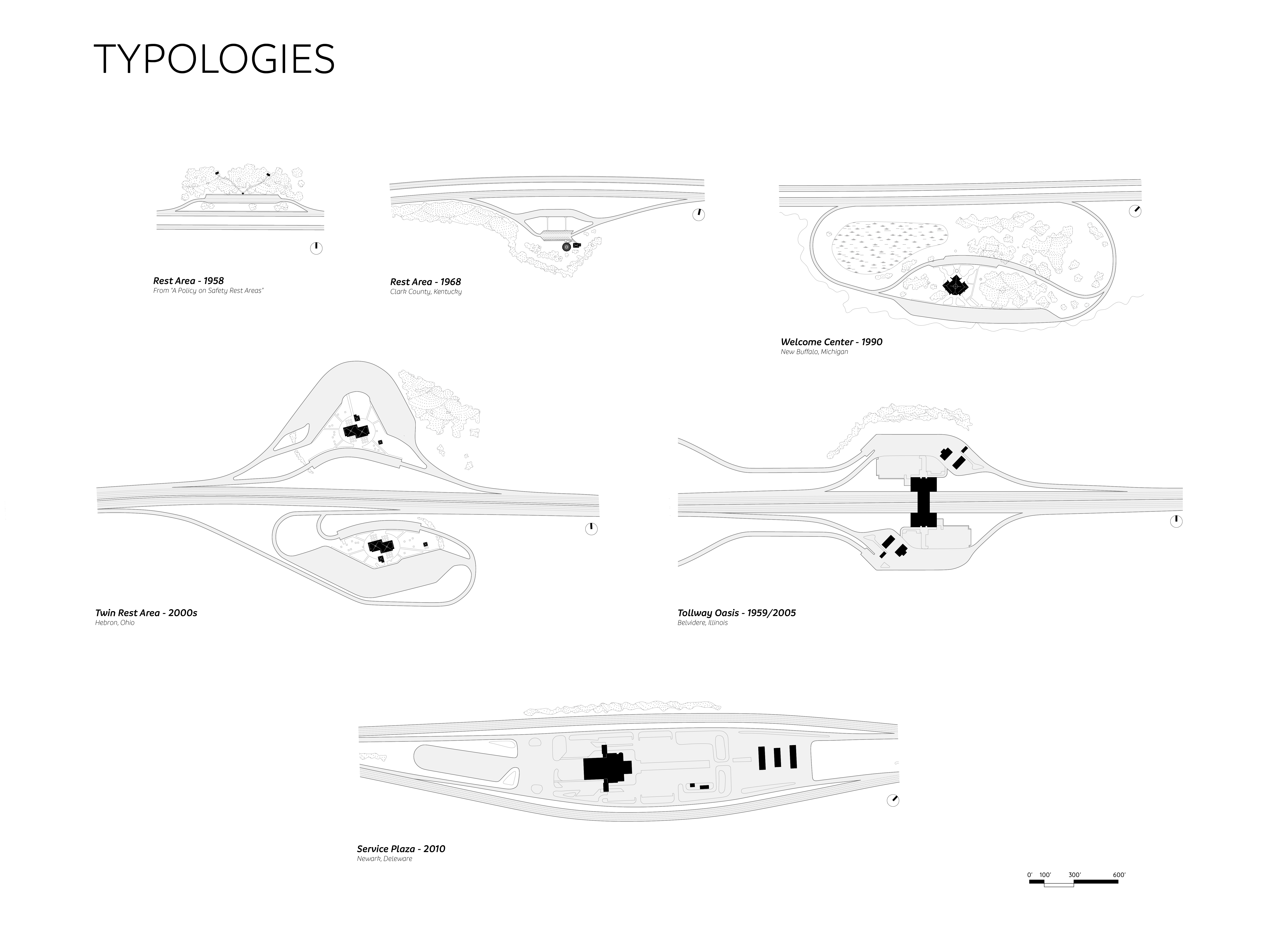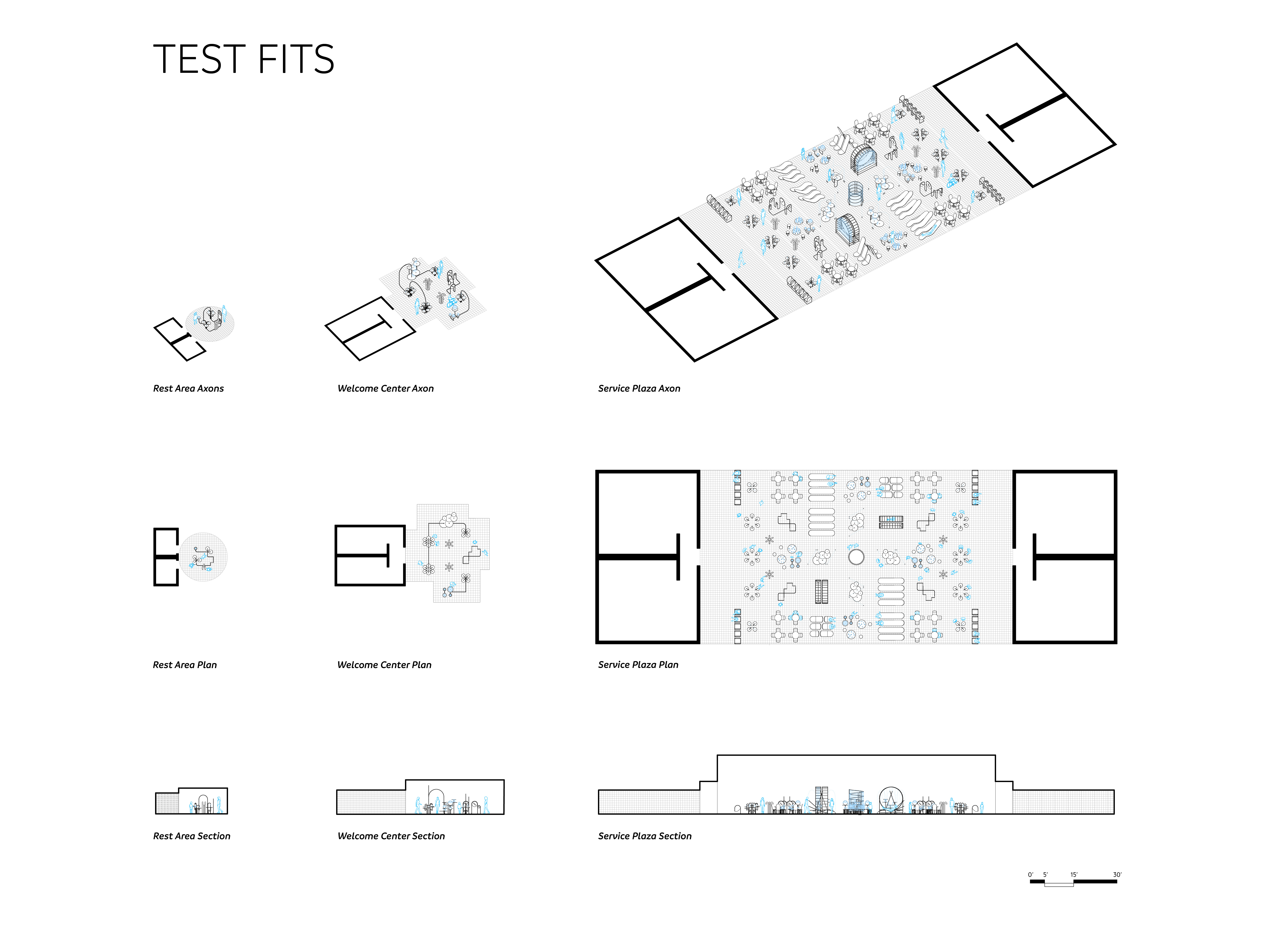
REST OPS
Project Team: JohnTaylor Bachman + Katie Stranix
Rest stops are found at a consistent rhythm both along urban corridors and across the far reaches of the country’s rural landscape. Their distribution imposes a geographical meter onto the national landscape that is unusually irrespective of “urbanity.” They are one of the few public spaces that have both the physical distribution and programmatic necessity capable of capturing an immense volume and cross section of the nation’s demographic. In this way, rest stops have the potential to become social condensers or platforms for the socialization of disparate ideals. They present opportunities for both physical interaction and conversational engagement among people of different backgrounds and beliefs. The only problem is, most people want to spend as little time in rest stops as possible. Whether it’s strict travel schedules or concerns around cleanliness or safety, the majority of travelers share a “get-in-get-out” mentality when it comes to the rest stop.

How do you encourage interaction and exchange in a transient space? Our proposal, Rest Ops, identifies shared needs and moments of pause, however brief, within the typical rest stop experience, and by consolidating and centralizing these needs and moments, we open them up to the potential for connection. Sinks and hand dryers are pulled out from restrooms, drinking fountains are hauled off of the walls and into the central space, and interactive fountains are introduced to encourage play and meditation. In these new configurations, water escapes the captivity of the ceramic wall-mounted fixture and is celebrated as an essential life-sustaining element, worthy of gathering and ritualistic engagement. By combining these elements in playful and site-specific ways, and by focusing on basic, shared human needs and experiences, Rest Ops encourages casual and necessary face-to-face communication to unfold between travelers.



